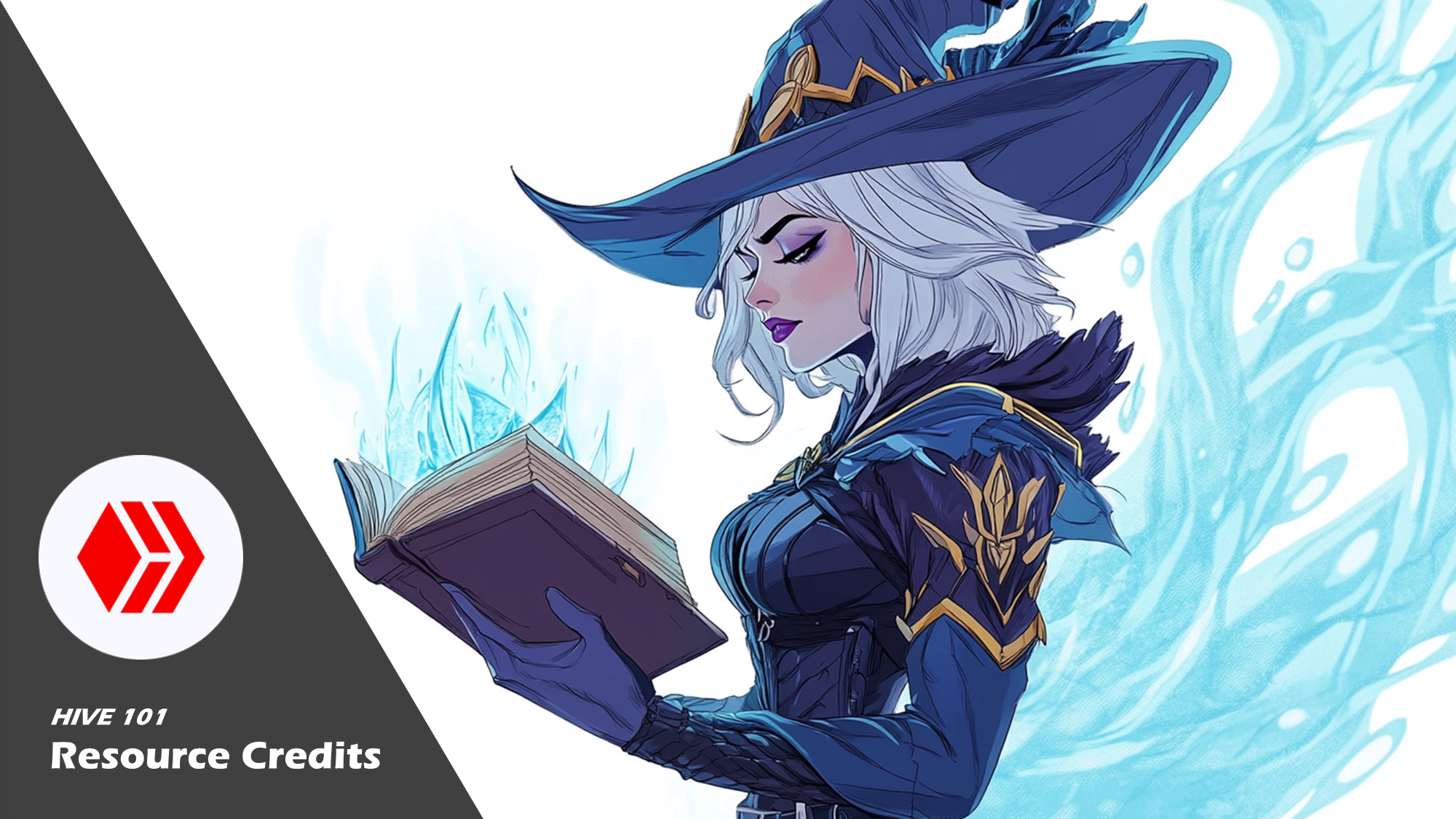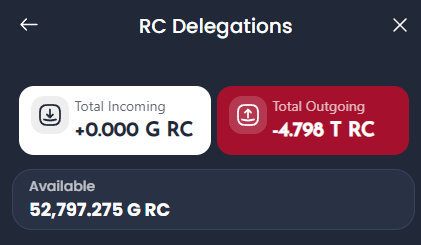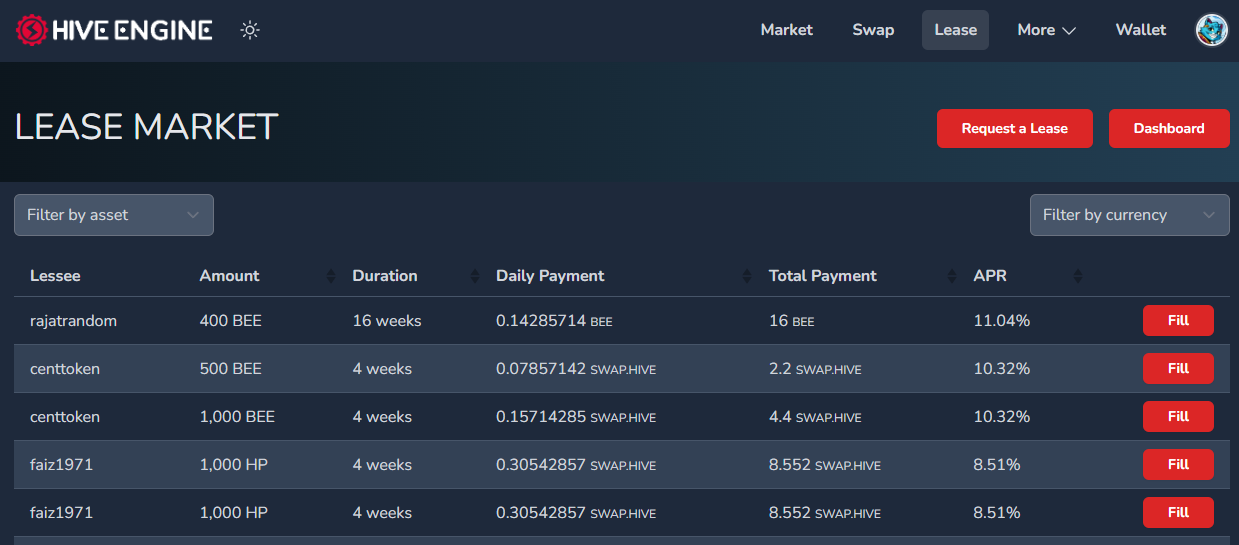
This is the second edition of Hive 101, a series of posts where I explore fundamental concepts on the Hive blockchain as someone who's been around for a relatively long time (since 2021) but who is still relatively "new" to the blockchain as most of my time on Hive has been focused on Splinterlands. If you'd like to check out the first post I made on Reputation, you can find it here.
In this post, I look at Resource Credits, Hive's gas-free transaction model.
Hive Resource Credits in a nutshell
Unlike most blockchains where users typically have to pay a transaction fee (e.g. "gas" in Ethereum), Hive has a fee-less model for transactions where users consume Resource Credits (aka "RC") instead.
A user's RC is based on how much Hive they have staked (aka "Hive Power" or HP) and is expressed as a number going from 0 to 100%. It replenishes over time, and is the only "resource" that users pay when executing transactions on the Hive blockchains. As a result, transactions on Hive are effectively zero-fee (users don't have to pay Hive for every transaction as they expend their rechargeable RC instead).
Resource Credits are a rechargeable resource users get with their Staked Hive (HP) and which enables fee-less transactions on the Hive blockchain

How RC is calculated
RC is a non-transferable (account-bound) resource which is based on a user's HP.
From what I understand, a user's max RC is based on their own staked HP divided by the total HP of all users times the global RC pool across all Hive accounts. But instead of HP, the calculation uses something called "VESTS", which are used internally for the RC calculation. 1 HP ≈ 500–550 VESTS at the moment, and this varies baed on the total HP in the network and the total VESTS issued. Then, a user's max RC is calculated roughly as follows:
Max_RC = (Your_VESTS / Total_VESTS) x Total_RC_Pool
Most users won't care about the exact calculation however. What matters to most users is that more HP = more RC.
As for RC regeneration, I looked around a lot and couldn't find the exact function used to determine regeneration, however it seems fairly well accepted that RC regenerates roughly 20% (of the max amount) per day and therefore it takes ~5 days to fully recharge your RC (if you're at zero).
Every blockchain transaction (vote, post, comment, transfer, etc.) costs some RC, but the costs vary based on the activity. E.g.: - Voting = low cost - Posting / commenting = medium cost - Creating an account or uploading large media = high cost
You can check RC costs here: https://hivehub.dev/stats?metric=rc&timeframe=daily
The actual RC cost of operations is dynamic. It's based on a global RC pool for each type of system resource, and when network usage is high the RC cost of operations goes up. However, since it's a rechargeable resource that isn't paid in Hive, those fluctuations are less negatively impactful than they might be, for example, when gas fees on Ethereum spike and leave users debating whether executing a transaction is "worth the price".
Your total RC is based on your staked Hive (HP) and takes roughly 5 days to fully recharge from zero.

How do I get RC?
- Buy Hive and stake it: Of course, the primary way to obtain RC is to buy Hive and stake it (into "Hive Power", aka "HP"). This immediately boosts your RC and is fully within your control.
- Get delegation: Another way to obtain RC is to have it delegated to you. Both HP and RC can be easily delegated via Hive Keychain as well as other means, and it's a great way for new users to get onboarded as well. For example, I delegate RC to some of the new users I've onboarded into Splinterlands to help them have enough to combine or rent/buy cards or open packs. Splinterlands also automatically delegates RC/HP to users to ensure they're able to perform a minimum number of transactions in the game.

- Lease HP (and therefore RC): Another way to obtain HP is to lease it, which can be useful for users starting out as well as to get time-limited boosts (e.g. if you want to open lots of packs in Splinterlands or do another operation that'll require lots of RC) (guide on HP/RC leasing in this Splinterlands article)

You can get RC buy buying & staking Hive, receiving delegations, or by leasing it.
What makes RC great
- Reduces congestion (Fast): The use of RCs means there's no need to calculate or pay fees on-chain and makes resource allocation predictable (via HP). This enables transactions to be broadcast instantly. The reduced latency means faster transactions.
- Stake-based allocation (Fair): More stake = more activity potential. Enabling users with more staked Hive to perform more actions is a fair way to allocate resources.
- Usability (Free): RC means transactions are essentially fee-less, which is a much better experience for players. Imagine Splinterlands players needing to pay Hive every time they wanted to combine cards!! Also, the ability to delegate HP (more on that below) makes it possible to onboard users and give them more access to the blockchain without requiring them to invest heavily.
- Spam & abuse prevention (Safe): Since RC is tied to HP, it means a malicious actor would need a lot of Hive Power to abuse the network. This makes flooding the blockchain economically infeasible.
RC makes it possible for Hive to be "fast, fair, free, and safe". It's a throttle that enables fast & free transactions for staked users while preventing spam and abuse.
After spending a lot of time on Hive, we start taking concepts like these for granted. Having fast & free transactions feels like something obvious, but it's far from the reality on many blockchains. This is just one of the things that makes Hive great.

If there's anything I've gotten wrong in this article, or anything I've missed, please point it out in the comments!
All the art in this post was created using Midjourney AI